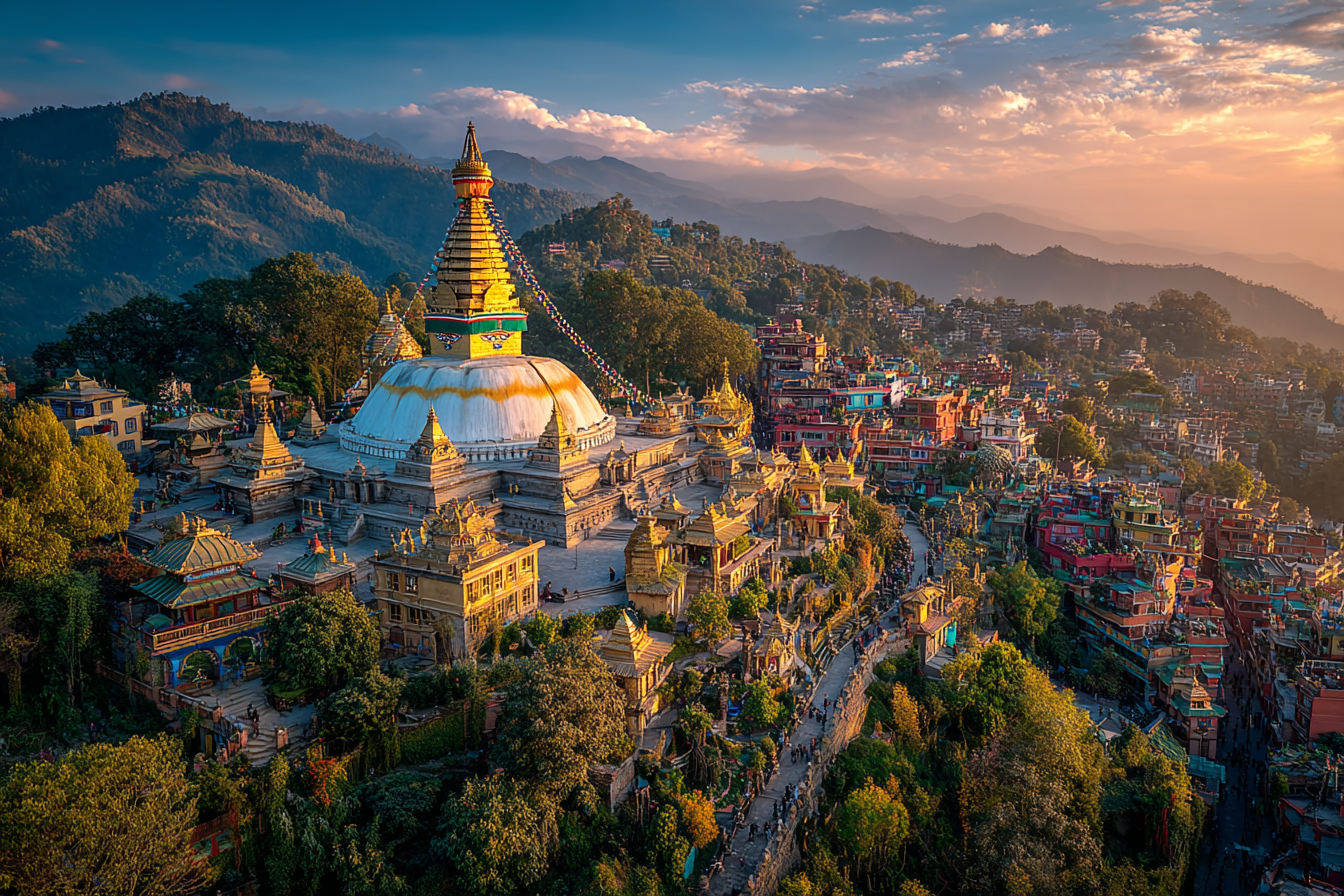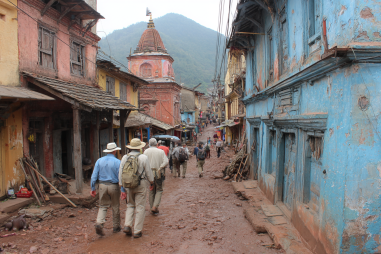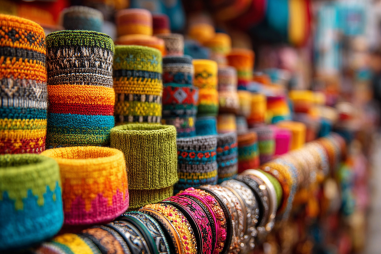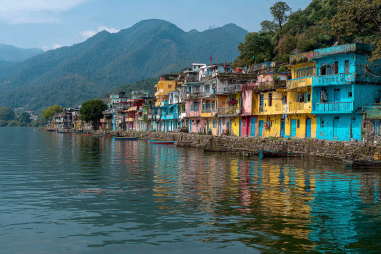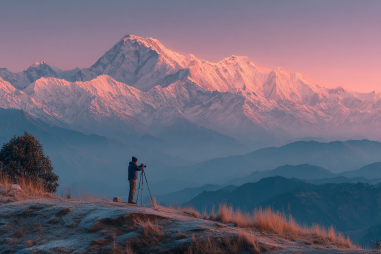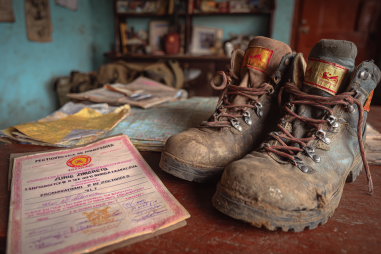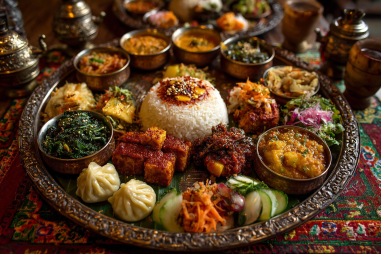Kathmandu, the vibrant capital of Nepal, is a captivating city that effortlessly blends ancient history with bustling modernity. Renowned for its rich cultural heritage, exquisite architecture, and lively streets, Kathmandu offers travelers an unforgettable sightseeing experience. Whether you’re drawn to the serene Buddhist stupas, majestic Hindu temples, or the colorful local markets, the city’s diverse attractions promise a unique glimpse into Nepal’s traditions and daily life. This guide will walk you through the top must-see sights in Kathmandu and share helpful tips to make your visit both enjoyable and respectful.
Overview of Kathmandu’s Sightseeing Highlights
Nestled in the Kathmandu Valley, Kathmandu is a treasure trove of historical sites and cultural landmarks. The city has been the heart of Nepal’s art, religion, and politics for centuries, and evidence of this rich past is visible in its many temples, palaces, and squares. Visitors can explore UNESCO World Heritage sites like ancient Durbar Squares, elaborate stupas that showcase Buddhist art, and sacred Hindu temples that highlight Nepal’s spiritual depth. Beyond the historic and religious landmarks, Kathmandu also surprises with peaceful gardens and bustling markets where you can experience contemporary local life. The perfect Kathmandu sightseeing itinerary balances these diverse attractions, offering a holistic view of the city.
Swayambhunath Stupa (Monkey Temple)
Often referred to as the Monkey Temple because of the playful monkeys that inhabit the area, Swayambhunath is one of the most iconic landmarks in Kathmandu. This ancient stupa sits atop a hill, offering panoramic views of the city below. The white dome, topped with golden spires and the famous Buddha eyes, symbolizes Buddhist teachings and compassion. Pilgrims and tourists alike climb the steps surrounding the stupa, spinning prayer wheels and soaking in the tranquil atmosphere. The site is active with monks chanting and devotees making offerings, providing a deeply spiritual experience. Don’t miss the collection of smaller shrines and temples scattered around the complex, each richly adorned with intricate carvings and vibrant murals.
Boudhanath Stupa
Boudhanath Stupa is another of Kathmandu’s must-see sights, especially for those interested in Tibetan Buddhism. This massive white dome with a shimmering golden spire is one of the largest spherical stupas in Nepal and a crucial pilgrimage site. The stupa is encircled by a lively marketplace filled with shops selling Tibetan handicrafts, prayer flags, and spiritual items. You can join locals and devotees circumambulating the stupa clockwise, spinning prayer wheels and chanting mantras. The energy here is peaceful yet vibrant and offers a wonderful opportunity to immerse yourself in Tibetan culture. Nearby monasteries and cafes provide further spaces to observe religious rituals or simply relax and absorb the atmosphere.
Pashupatinath Temple
The Pashupatinath Temple is the holiest Hindu temple complex in Nepal, dedicated to Lord Shiva. Located along the banks of the Bagmati River, it serves as a major spiritual hub with several temples, ashrams, and ghats where cremations are traditionally performed. While non-Hindus cannot enter the main temple, the sprawling complex offers plenty to see, including beautifully carved pagoda-style structures and statues. Witnessing rituals and ceremonies here, especially at sunset, is a deeply moving experience. The temple area is also home to many sadhus (holy men) who add to the vibrant religious fabric of the site. Remember to dress modestly and remove your shoes when entering temple courtyards.
Durbar Squares of Kathmandu
Kathmandu Durbar Square is a historical and architectural highlight in the city, featuring a complex of palaces, courtyards, and temples that date back to the Malla period. This square was once the royal palace of the Nepalese monarchy and is now a UNESCO World Heritage Site. Nearby Bhaktapur and Patan Durbar Squares are also worth visiting for their equally impressive artistry and vibrant street life. In Kathmandu Durbar Square, you can admire the intricately carved wooden windows and doors, stone statues, and impressive pagoda temples like Kasthamandap and Taleju Bhawani. The area buzzes with local vendors, artists, and festivals, offering a perfect blend of history and living culture.
Garden of Dreams
For a peaceful escape from the city’s hustle and bustle, the Garden of Dreams is a beautifully restored historic garden offering a serene oasis. With its classic European-style pavilions, fountains, and flower beds, this garden is perfect for a leisurely walk or enjoying a cup of tea in the charming courtyard café. Originally built in the 1920s, the garden reflects neoclassical design fused with local aesthetics and provides a lovely spot to relax after visiting the busy city streets. Its tranquil ambiance attracts both tourists and locals, often hosting cultural events and performances that showcase Nepalese art and music.
Thamel and Local Markets
Thamel is Kathmandu’s vibrant tourist hub, known for its lively atmosphere, colorful shops, and diverse eateries. Exploring Thamel’s narrow streets is a great way to experience Kathmandu’s contemporary side. The neighborhood offers everything from traditional handicrafts, souvenirs, and Tibetan clothing to trekking gear and local cuisine. Nearby markets like Asan Bazaar are perfect for discovering fresh produce, spices, and street food in a more authentically Nepali environment. Don’t hesitate to bargain and interact with friendly vendors when shopping. Sampling local delicacies such as momo (dumplings) and dal bhat (lentil rice) will deepen your cultural experience.
Tips for Sightseeing Tours
To make the most of your Kathmandu sightseeing adventures, consider these helpful tips:
- Start early: Many attractions open early, and mornings are generally less crowded and cooler, ideal for exploring.
- Hire a local guide: Knowledgeable guides can provide invaluable insights into the history, culture, and religious significance of sites.
- Wear comfortable clothing and shoes: Many heritage sites require walking on uneven paths or climbing stairs.
- Stay hydrated: Kathmandu’s weather can be warm and dry, so carrying water is essential.
- Respect opening hours: Some temples and sites close during midday or early afternoon, so plan visits accordingly.
- Photography: Always ask permission before photographing people, especially at religious sites, and be mindful of signage restricting photography.
Cultural Etiquette While Visiting Sacred Sites
When visiting Kathmandu’s temples and stupas, observing local customs and etiquette enhances your experience and shows respect. Some key points to remember include:
- Dress modestly: Wear clothing that covers shoulders and knees, avoiding flashy or revealing attire.
- Remove shoes and hats: Always remove footwear before entering temple buildings or sacred courtyards.
- Maintain silence or speak softly: Sacred sites are places of worship and reflection, so keep noise to a minimum.
- Follow ritual directions: Join the clockwise circumambulation around stupas and do not touch sacred objects unless permitted.
- Avoid pointing feet: Feet are considered unclean in Nepali culture, so avoid pointing them toward altars or people.
- Seek permission for photography: Some areas and ceremonies do not allow photos, so respect these guidelines.
Being mindful of these customs ensures you enjoy a respectful and immersive experience in Kathmandu’s sacred spaces.
Exploring Kathmandu: Recommended Routes
To help you navigate Kathmandu’s diverse attractions, here are two recommended sightseeing routes depending on your interests and time:
Route 1: Cultural and Spiritual Highlights (Full Day)
- Morning: Begin with Swayambhunath Stupa to enjoy breathtaking views and morning rituals.
- Late Morning: Head to Boudhanath Stupa for a spiritual walk and shopping at Tibetan market stalls.
- Afternoon: Visit Pashupatinath Temple to witness Hindu rituals and explore the sacred riverbanks.
- Evening: End your day in Thamel, sampling local cuisine and browsing shops.
Route 2: Historical and Relaxing Exploration (Half to Full Day)
- Morning: Explore Kathmandu Durbar Square and its historic courtyards and temples.
- Midday: Take a break at the Garden of Dreams for refreshments and relaxation.
- Afternoon: Wander through Asan Bazaar for an authentic local market experience.
- Optional Evening: Return to Durbar Square or nearby Patan and Bhaktapur Durbar Squares for illuminated sights if time permits.
Both routes provide a rich blend of Kathmandu’s heritage, spirituality, and everyday life, making your sightseeing trip well-rounded and memorable.
Kathmandu’s unique charm lies in its ability to offer visitors both historical depth and vibrant street life in one captivating city. Whether you’re enchanted by ancient stupas, intricate temples, or the hustle of markets and cafes, the city has something to offer everyone. With this detailed sightseeing guide, you’re well equipped to explore and appreciate the many facets of Kathmandu, ensuring your visit is as enriching as it is unforgettable.

